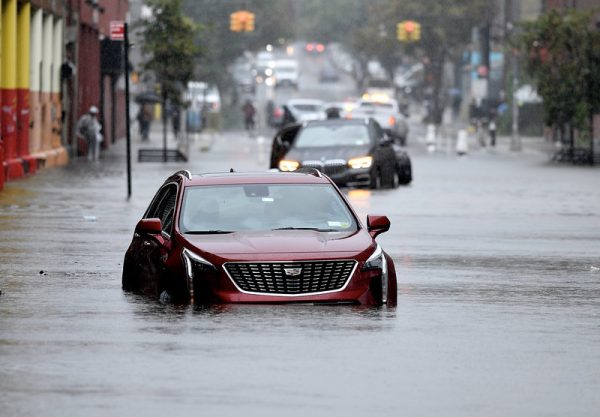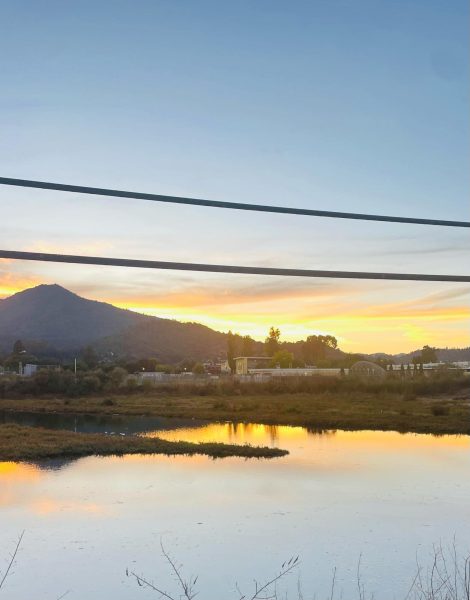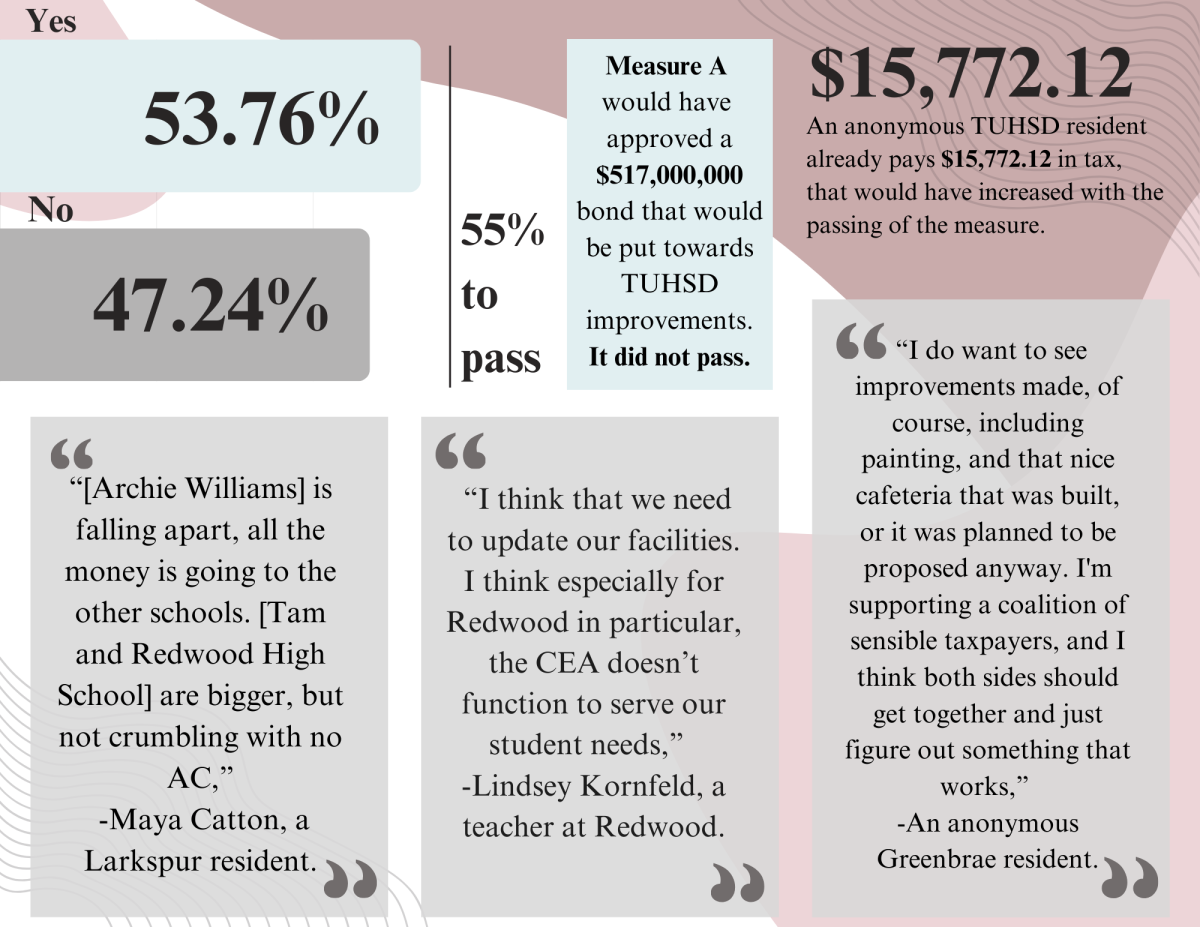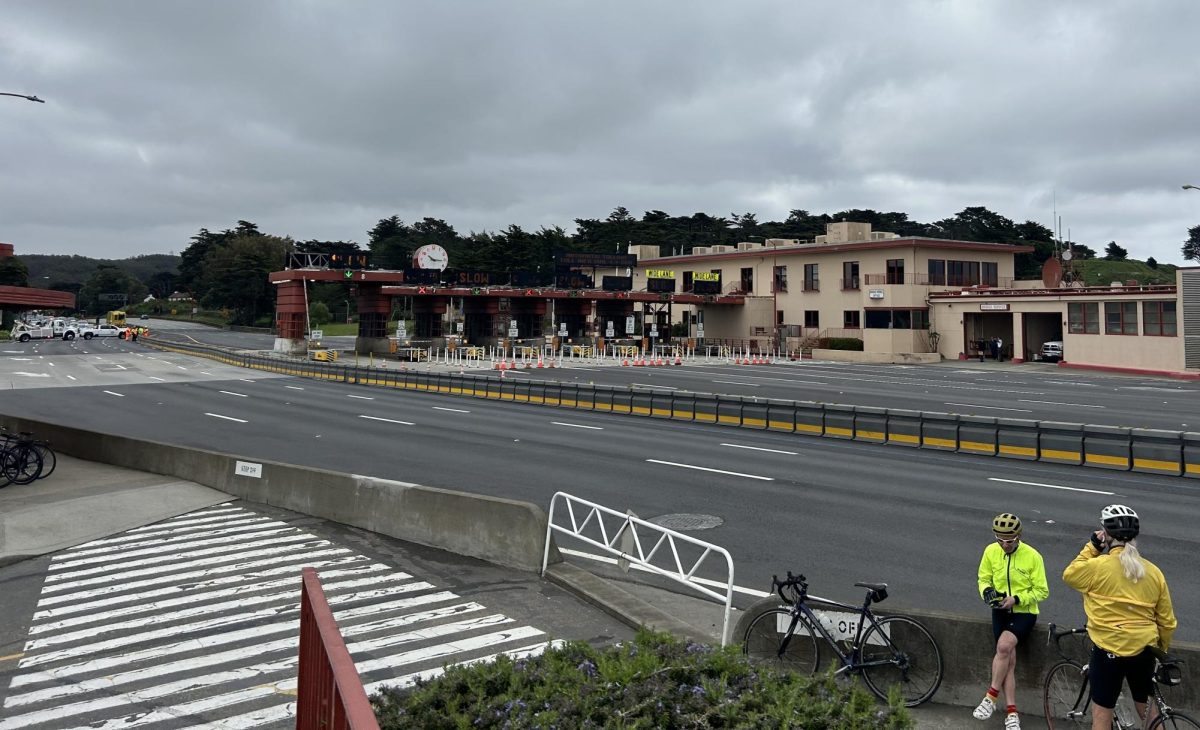
 As winter approaches, scientists are predicting an even colder and wetter winter this year in the Bay Area than last year. According to Anthony Edwards of the San Francisco Chronicle, this coming winter will likely be relatively extreme due to El Niño, the weather phenomenon that brings warmer water to oceans off the California coast. This particular bout of El Niño will continue through March 2024 and is predicted to be relatively severe, bringing storms to the Bay Area and an increased risk of flooding for Redwood.
As winter approaches, scientists are predicting an even colder and wetter winter this year in the Bay Area than last year. According to Anthony Edwards of the San Francisco Chronicle, this coming winter will likely be relatively extreme due to El Niño, the weather phenomenon that brings warmer water to oceans off the California coast. This particular bout of El Niño will continue through March 2024 and is predicted to be relatively severe, bringing storms to the Bay Area and an increased risk of flooding for Redwood.
This wet weather may result in something particularly problematic because the damage left behind by the recent flooding in New York could point to a similar future for our community.
On the evening of September 29, New York City was hit with over eight inches of precipitation in five hours, breaking the record that was previously set by Hurricane Donna in 1960. Brooklyn, Manhattan and other neighborhoods were flooded with more rainfall than they could handle.
New York City is a susceptible area to flooding due to its coastal location and numerous ports that help facilitate shipping across the United States. Its sewers, which were built to hold 1.75 inches of water an hour, overflowed when they reached 3 inches per hour. Yet the sewers were not the only things that were put in jeopardy, and even a few weeks after the storm, the city is still recovering.
Emily LaTourrette, a freshman English and Advanced Placement Seminar teacher was in New York the weekend of the flood. She explained that many New Yorkers not only had problems with flooding in their homes but also with transportation.
“We talked to a woman in one of the stores we went to. She had left her house at 8:30 or 8:45 [a.m] in Brooklyn, and it had taken her until noon to get to work [in south of Hampton Street],” LaTourette said.
LaTourette was not in one of the specific neighborhoods that were affected but explained how it was still shocking to see photos of different places that were.
“Seeing images from Brooklyn or LaGuardia International Airport of how one of the terminals was completely flooded was surprising given that [in the area we were in] it was just raining — and not flooding,” LaTourrette said.
Although it may seem like the flooding on the East Coast is a world away, our community could face similar issues in the future. Redwood High School is located on low-lying land, meaning it is only a few feet above sea level and has a considerably high risk for flooding. Before the construction of Redwood in 1958, the facilities, such as the parking lots and sports fields, were essentially marshlands that bordered the Corte Madera Creek, which still surrounds campus today.
Science teacher Jamie Garcia explained how Redwood’s architecture has improved with managing extensive amounts of water and flooding since its opening.
“Redwood’s infrastructure has improved; the parking lots don’t flood like they used to, so the flooding is better managed [and] the water is better managed,” Garcia said.
English teacher Jennifer Madden, who has worked at Redwood for 13 years, states that she has seen images from years past featuring students standing in flooded areas.

“There’s pictures in yearbooks decades back where kids are up to their waists in the back parking lot, but I haven’t been here to see that,” Madden said.
Although Redwood’s structure has been upgraded, it’s just a small step in the right direction as climate change is approaching quickly. Michael Mann, a meteorologist at the University of Pennsylvania, told USA Today that the planet’s increasingly warmer climate will bring heavier and more frequent rain storms, much like the storm that occurred in New York.
“Climate change causes more extreme weather, so there’s a pattern with increasing temperatures, but also in increasing extreme weather events,” Garcia said.
This information is especially relevant for this coming winter due to El Niño, and teachers at Redwood may not be as ready for an emergency as some may hope. According to Madden, teachers at Redwood are not trained specifically for flooding or what to do in cases of extreme weather.
As explained by Garcia and Madden, Redwood is moving toward a safer and more flood-adapted campus. But as the planet warms, events such as those in New York are happening more frequently. Hopefully, the changes Redwood has made will save it from potentially catastrophic damage that looms closer as the winter season approaches.

















